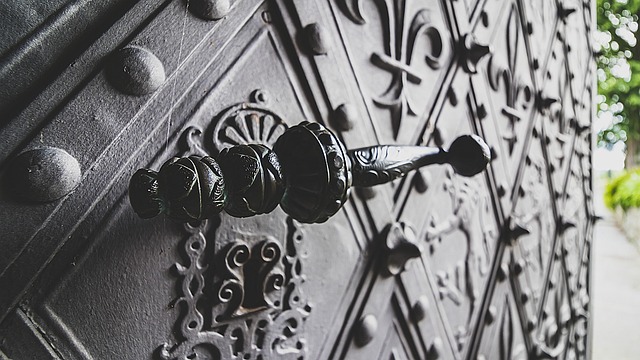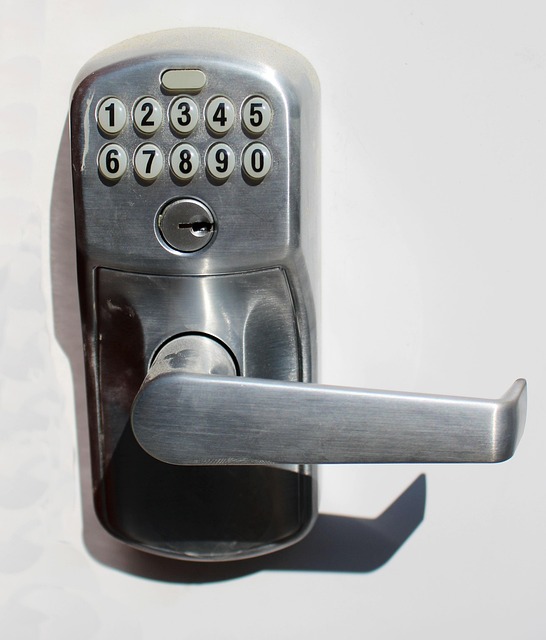In today's digital era, traditional locks and keys are outdated. Advanced access systems, powered by smart technology, biometric scanners, and AI, offer enhanced home security, convenience, and peace of mind. These cutting-edge solutions provide real-time monitoring, remote control, and detailed tracking of entry/exit activities, transforming the security landscape. Integrating with smart homes, these systems enable automated routines, voice-activated access, and personalized security measures, prioritizing both safety and ease of use. The future of home security lies in advanced access systems, ensuring unparalleled protection and convenience.
In today’s digital age, securing your home has evolved beyond traditional locks and keys. Understanding the limitations of conventional entry systems is the first step towards embracing high-tech solutions that offer enhanced security and convenience. This article explores the transformative power of advanced access systems, delving into biometric technologies, smart home integration, and emerging trends shaping the future of secure home entry. Discover how these innovative approaches ensure only authorized individuals gain access to your sanctuary.
- Understanding Traditional Home Entry Security and Its Limitations
- The Rise of Advanced Access Systems: A Modern Approach
- Biometric Technologies for Secure Entry: Fingerprints and Beyond
- Smart Home Integration: Creating a Seamless Experience
- Future-Proofing Your Home: Emerging Trends in High-Tech Security
Understanding Traditional Home Entry Security and Its Limitations

In traditional homes, entry security often relies on locks and keys, sometimes supplemented by doorbells and peepholes. While effective to a certain extent, this setup has several limitations in today’s digital age. The need for physical keys can be inconvenient, and there’s little to no real-time monitoring or access control beyond the resident’s presence. Moreover, such systems offer no advanced analytics or historical data on entry attempts, making it challenging to identify potential security breaches or unusual activity patterns.
This is where high-tech solutions, specifically advanced access systems, come into play. These cutting-edge technologies not only enhance security but also provide remote control, real-time alerts, and detailed insights into who enters and exits the home. By integrating smart locks, biometric scanners, and AI-powered analytics, homeowners can achieve a new level of protection, convenience, and peace of mind.
The Rise of Advanced Access Systems: A Modern Approach

The security landscape is evolving, and with it, our homes are increasingly becoming fortified with high-tech solutions for secure entry. This shift is largely driven by the rise of advanced access systems—a modern approach to home security that leverages cutting-edge technology. From biometric scanners to facial recognition software and smart locks, these innovative systems offer unprecedented levels of protection and convenience.
Advanced access systems provide a multi-layered defense against unauthorized entry, ensuring that only recognized individuals can gain access. This evolution in home security reflects our growing dependence on technology for peace of mind. By integrating smart features with traditional security measures, homes are now equipped to detect, deter, and respond to potential threats in real time—a far cry from the mechanical locks and alarms of the past.
Biometric Technologies for Secure Entry: Fingerprints and Beyond

Biometric technologies have revolutionized high-tech solutions for secure home entry, offering advanced access systems that go beyond traditional keys and codes. These cutting-edge systems utilize unique physical characteristics to identify individuals, ensuring only authorized persons gain access. One of the most common and reliable biometric methods is fingerprint recognition, where intricate patterns on a person’s fingertip are scanned and matched against stored data for secure entry.
While fingerprints have long been a standard, newer technologies like facial recognition, iris scanning, and even voice identification are emerging as powerful alternatives. These advanced access systems integrate seamlessly with smart homes, allowing for automated and personalized security measures. For instance, a homeowner’s voice command could become the key to unlocking their door, providing convenience while maintaining unparalleled safety.
Smart Home Integration: Creating a Seamless Experience

The integration of smart home technology has revolutionized secure entry solutions, offering homeowners an unprecedented level of control and convenience. Advanced access systems now form a seamless part of modern homes, allowing for automated and personalized entry experiences. By connecting various devices and sensors to a central hub, users can create intricate routines that adapt to their daily lives. For instance, upon arrival home, a simple voice command or smartphone notification could trigger the door to unlock, lights to turn on, and even the ideal temperature to be set—all tailored to the resident’s preferences.
This level of integration ensures that security measures are not just reactive but proactive. Smart locks, for example, can detect unusual activity and alert homeowners or authorized personnel, enhancing safety. Additionally, advanced systems learn user patterns, automatically adjusting settings and access privileges accordingly. This technology not only simplifies home management but also fortifies security, providing peace of mind in an increasingly digital world.
Future-Proofing Your Home: Emerging Trends in High-Tech Security

As technology continues to evolve, so do the threats to home security. Future-proofing your home involves keeping pace with emerging trends in high-tech security. One prominent area is advanced access systems, which go beyond traditional locks and keys. These systems utilize biometric authentication, such as fingerprint or facial recognition, to ensure only authorized individuals can enter. Smart home integration is another key trend, allowing users to control and monitor access remotely via their smartphones or other connected devices.
Furthermore, artificial intelligence (AI) and machine learning are being leveraged to identify patterns and anomalies in security data, enabling proactive protection against potential threats. Cameras equipped with AI capabilities can now detect unfamiliar faces, send alerts, and even record and share footage for enhanced accountability. These innovations not only strengthen home security but also offer peace of mind, ensuring your home remains a safe haven in an increasingly connected world.
The evolution of home entry security has shifted from traditional locks and keys to high-tech solutions that offer unprecedented convenience and protection. Advanced access systems, biometric technologies, and smart home integration are transforming the way we secure our homes. As technology continues to advance, these innovations will only become more sophisticated, ensuring that our properties remain safe while providing effortless entry experiences. Embracing these modern approaches is key to keeping up with evolving security needs in an increasingly connected world.
